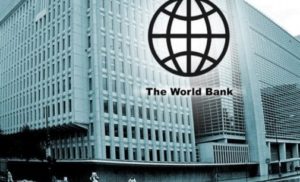WASHINGTON, D.C. — Africa’s cities are growing in population — adding the size of another Nigeria to cities by 2025 — so they have a critical role to play in their countries’ economic growth, says a new World Bank report released Tuesday, Feb. 14. Improving conditions for people and businesses in African cities by aggressively investing in infrastructure and reforming land markets is the key to accelerating economic growth, adding jobs and improving city competitiveness.
The report, “Africa’s Cities: Opening Doors to the World,” notes that to grow economically as they are growing in size, Africa’s cities must open their doors and connect to the world. Africa’s urban population stands at 472 million people today. As cities grow in size, another 187 million people will be added to urban areas by 2025. In fact, Africa’s urban population will double over the next 25 years, reaching 1 billion people by 2040.
“What Africa needs are more affordable, connected and livable cities,” said Makhtar Diop, World Bank Vice President for Africa. “Improving the economic and social dividends from urbanization will be critical as better-developed cities could transform Africa’s economies.”
The report notes that Africa is urbanizing at lower incomes than other developing regions with similar urbanization levels. In 1968, when countries in the Middle East and North Africa region became 40 percent urban, their per capita GDP was $1,800 (2005 constant dollars). And in 1994, when countries in the East Asia and Pacific region surpassed the same threshold, their per capita GDP was $3,600. By contrast, Africa, with 40 percent urbanization, today has a per capita GDP of just $1,000. This means that every dollar of public investment in cities needs to be done as efficiently as possible, and leveraging as much as possible other sources of finance — from private sector, international partners, and citizens.
Rapid urbanization at lower incomes has meant that capital investment in African cities has remained relatively low in the region for the past four decades, at around 20 percent of GDP. In contrast, urbanizing countries in East Asia — China, Japan, and the Republic of Korea — stepped up capital investment during their periods of rapid urbanization.
Lacking capital investment, the report emphasizes that investments in African cities’ infrastructure, industrial and commercial structures have not kept pace with concentration of people nor have investments in affordable formal housing. The potential for coordinated investments in infrastructure, residential and commercial structures is great, which will enhance agglomeration economies and connect people with jobs.
Read more here



